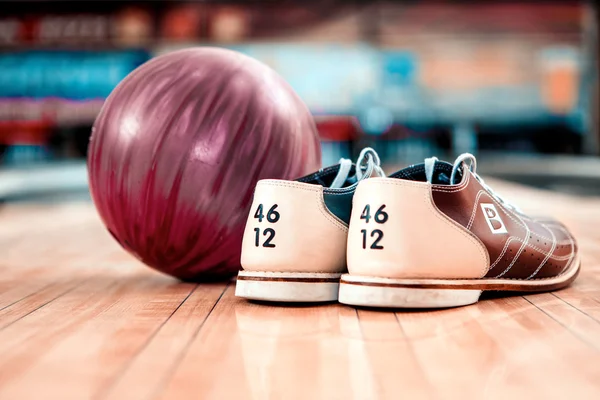Bowling holds a special place in the hearts of people worldwide, appealing to individuals of all ages, from children to the elderly. Whether it’s a casual outing with friends and family or a more serious competition, the bowling alley offers a welcoming and inclusive environment for all.
Despite its popularity as a recreational pastime, bowling also boasts a competitive side that thrives on both local and global scales. Many enthusiasts find themselves surprisingly skilled at the sport, fueling a desire to see bowling recognized on the Olympic stage.

The quest to attain Olympic status is a significant milestone for any sport, elevating its status to a truly competitive realm. Advocates of bowling have long harbored hopes of seeing it featured in the Olympics, though it has yet to secure a spot.
Will bowling ever achieve Olympic status? Join us as we delve into its history to uncover the answer.
Has Bowling Ever Been Part Of The Olympics?
Bowling has never been included as an official sport in the Olympics. However, there have been instances where it was featured in a much smaller capacity. Let’s delve into these occurrences.
The closest bowling has ever come to Olympic inclusion was during the 1980s and 1990s, a time when the sport was flourishing in the United States and Asia.
During this period, bowling was included in the demonstration events of both the 1988 Seoul Summer Olympics and the 1996 Atlanta Summer Olympic Games. However, it’s important to note that this participation was part of what they termed a ‘demonstration program’.
The decision to include bowling in these demonstration events was likely influenced by its growing popularity in other sporting events at the time.
1978 Asian Games
The momentum for including bowling in the Summer Olympics gained significant traction following its remarkable success at the 1978 Asian Games in Thailand. Hosted in Bangkok, this event marked the first-ever multi-sport competition to feature bowling.
Furthermore, bowling has been a consistent presence in the ‘World Games’, a quadrennial sporting event, since its inaugural edition in the United States in 1981.
Although bowling was temporarily removed from the Asian Games in 1982, held in India, a nation with lesser-known bowling popularity, it made a triumphant return four years later at the 1986 Asian Games in Seoul, South Korea.
The enthusiastic reception of bowling during the 1986 Seoul Asian Games, coupled with its inclusion in the event, fueled a significant push from fans and players alike for the sport to be featured in the Summer Olympics held in Seoul in 1988, or at least included as a demonstration sport.
As A Demonstration Sport
In the wake of bowling’s notable presence at the 1986 Asian Games, which undoubtedly contributed to the event’s overall success, advocates fervently lobbied for its inclusion in the subsequent Seoul Summer Olympics of 1988.
However, despite widespread acknowledgment of bowling as a bona fide and widely enjoyed sport, the Olympic committee ultimately withheld official recognition. This decision stemmed largely from logistical apprehensions, particularly regarding the perceived costliness associated with the requisite equipment and infrastructure for bowling alleys. This concern, coupled with considerations of accessibility, especially in underdeveloped regions, posed significant barriers to bowling’s Olympic inclusion.
Nevertheless, the 1988 Seoul Summer Olympics did feature bowling as a demonstration sport. In this capacity, demonstration sports play a vital role in promoting and enhancing the Olympic experience within the host country, despite not competing for medals or gaining recognition in subsequent Olympic iterations.
The demonstration of bowling at the 1988 Olympics was a testament to its growing global appeal and significance within the sporting community. Yet, despite its successful showcase, bowling continued to fall short of securing official, medal-ranking status in the Olympic Games.
This trend persisted in the 1996 Atlanta Summer Olympics, where bowling once again made an appearance as a demonstration sport. Its inclusion, driven by its popularity in various American sporting competitions, underscored its enduring relevance and appeal on the international stage.
Despite the undeniable success of bowling as a demonstration sport, the quest for its official Olympic recognition remains unfulfilled. However, its continued presence in demonstration events serves as a reminder of its potential and enduring popularity within the realm of global sports.
2020 Summer Olympics
The most recent fervent effort to secure official Olympic recognition for bowling occurred in the lead-up to the 2020 Tokyo Summer Olympics.
During the 2015 ceremony announcing the games, it was revealed that bowling would be among a list of potential sports under consideration to join the Olympic roster, totaling 28 sports in all. This inclusion placed bowling in the esteemed company of Japanese sports such as ‘wushu’ and squash.
However, by June 2015, a decision was reached to drop bowling, along with the other two sports, from the list of potential additions to the Olympic program. This decision echoed past instances where bowling had been excluded from Olympic consideration.
The rationale behind this exclusion remained consistent: the Olympic committee sought sports that could engage youth without necessitating the creation of expensive sports facilities, and that could appeal to underdeveloped areas. Unfortunately, bowling did not fully meet these criteria, leading to its removal from consideration once again.
The Equipment Issue
The inherent challenges posed by bowling equipment and facilities have long hindered its widespread popularity and hindered its progression as a sport. This issue extends beyond just Olympic recognition, impacting various aspects of the sport’s development throughout history.
An illuminating example from bowling’s history is duckpin bowling, which faced significant obstacles due to the inability to patent the duckpin pinsetter. Invented by Ken Sherman, a submarine designer, Sherman’s automatic pinsetter boasted an impressive 1000 moving parts. However, Sherman staunchly guarded his patented invention, refusing to allow others to use it. Consequently, anyone seeking to establish a bowling alley was forced to cobble together 100 cannibalized parts salvaged from damaged machines, rather than creating a new pinsetter from scratch. This lack of competition stifled innovation in pinsetter design for an extended period, contributing to a stagnation in the sport’s advancement.

This scenario underscores the broader issues surrounding bowling equipment and facilities, which have only been partially addressed in the modern era. The substantial investment required for a bowling alley, including numerous balls, pinsetters, and other costly equipment, presents a significant barrier to entry, particularly in open areas where the financial feasibility of such ventures is uncertain.
One contemporary approach to mitigating these challenges involves integrating bowling alleys into larger recreational complexes that offer additional amenities such as food, drinks, and arcades. By diversifying the offerings and attractions of these establishments, operators can potentially offset the high costs associated with maintaining a bowling alley.
Despite these efforts, the accessibility of bowling equipment remains a concern. However, there is optimism that advancements in technology and changes in accessibility may pave the way for a brighter future for the sport. It’s worth noting that golf, another sport with significant equipment and facility costs, faced similar hurdles in its quest for Olympic inclusion. Ultimately, the challenges posed by equipment costs and a perceived lack of youth interest have positioned bowling and golf as two of the more expensive sports for Olympic consideration that are not yet part of the official program.
Conclusion
In summary, bowling has never been included as a medal-earning Olympic sport, and there are currently no plans for its inclusion. However, the recent addition of golf to the Olympic program offers some hope for the future.
The primary obstacle to bowling’s Olympic inclusion lies in its substantial financial requirements, as the sport necessitates costly equipment and facilities. While bowling has demonstrated its popularity, particularly in recreational settings, these financial considerations have hindered its formal acceptance into the Olympic program.
Although bowling has been featured as a demonstration sport in the 1988 and 1996 Olympics, this status does not confer official Olympic recognition; instead, it serves as a promotional tool. However, bowling has enjoyed success as a medal-earning sport in other multi-sport competitions outside of the Olympics. Notably, it has been part of the Pan American Games since 1991 and the Asian Games since 1986.
Despite its exclusion from the Olympics, bowling continues to thrive as a beloved recreational sport enjoyed by millions worldwide.
Allow me to introduce myself – I’m Eric Wilkinson, a true bowling aficionado. The world of bowling culture has always fascinated me, and I’ve made the exciting decision to share my passion through writing. As I embark on this blogging adventure, my goal is to provide fellow enthusiasts with valuable insights, tips, and captivating stories. Through my blog, I hope to ignite a deeper appreciation for the sport and foster a sense of community among fellow bowlers. Join me on this thrilling journey as we explore the vibrant world of bowling together.



